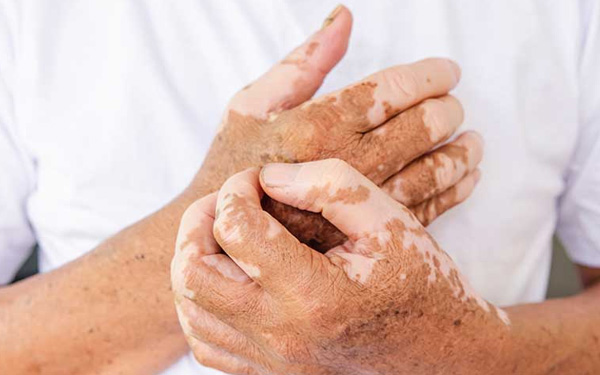Vitiligo

Vitiligo is a long-term skin condition characterized by the loss of skin pigmentation, resulting in white patches on the skin. This occurs due to the destruction of melanocytes, the cells responsible for producing melanin, the pigment that gives color to the skin, hair, and eyes. Here are some key points about vitiligo:
Symptoms:
- The primary symptom of vitiligo is the development of white or depigmented patches on the skin. These patches may appear on any part of the body and can vary in size and shape.
- Vitiligo can also affect mucous membranes (such as the mouth and eyes) and even the hair, turning it white or gray prematurely.
Common Causes:
- The exact cause of vitiligo is not fully understood, but it is believed to be an autoimmune disorder in which the body's immune system mistakenly attacks and destroys melanocytes.
- Genetic factors may play a role, as there is often a family history of the condition.
Risk Factors:
- Vitiligo can affect individuals of any age, race, or gender, but it is more noticeable in people with darker skin tones.
- Autoimmune disorders, such as thyroid diseases, type 1 diabetes, and alopecia areata, may increase the risk of developing vitiligo.
Diagnosis:
- A dermatologist typically diagnoses vitiligo based on a physical examination and medical history.
- In some cases, a skin biopsy may be performed to rule out other skin conditions.
Treatment:
There is no cure for vitiligo, but several treatment options are available to manage its symptoms and improve the appearance of affected skin. The choice of treatment depends on the individual's preferences and the extent of the condition.